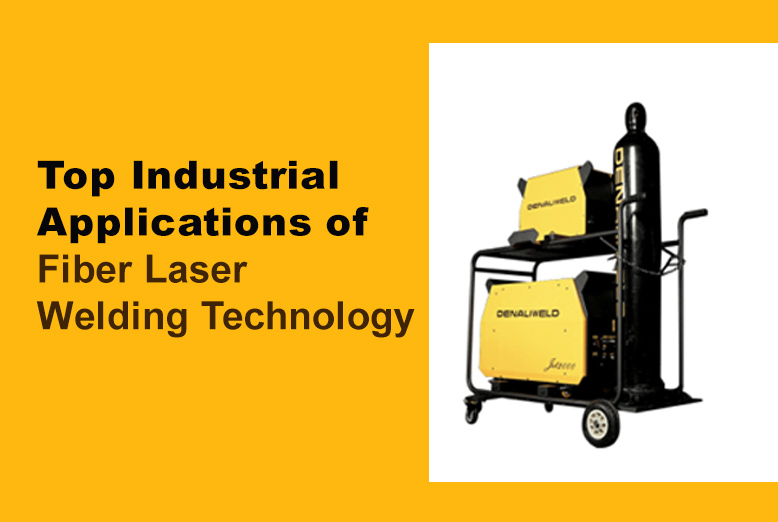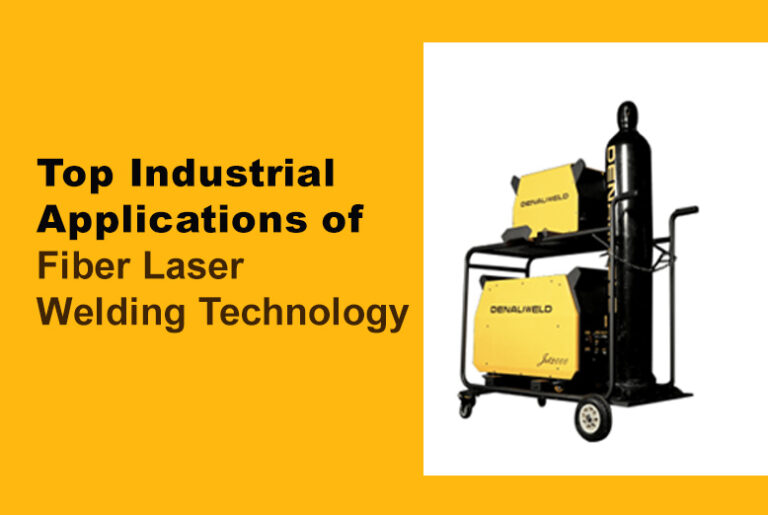In the fast-evolving world of manufacturing, precision and efficiency define success. Traditional welding methods, though reliable, often fall short when it comes to minimizing heat distortion, handling fine components, or maintaining high production speed. This is where the fiber laser welding machine has revolutionized the landscape.
By delivering a concentrated, high-energy beam through fiber optics, fiber laser welding enables fast, non-contact joining with minimal thermal impact. The result? Cleaner welds, reduced post-processing, and unparalleled consistency across materials and industries. From electric vehicles to medical implants, this technology is becoming the backbone of next-generation manufacturing.
Automotive and Electric Vehicle Manufacturing
The automotive industry was among the first to embrace fiber laser welding—and for good reason. As vehicles evolve to meet stricter performance and sustainability standards, the demand for lightweight, durable, and precise joining has skyrocketed.
Key Applications:
- Body and Structural Components: Fiber lasers join panels, brackets, and frames with tight tolerances, reducing rework.
- Exhaust Systems: Clean, corrosion-resistant welds on stainless steel and nickel alloys.
- Battery Manufacturing: In electric vehicles (EVs), fiber lasers weld battery tabs, cell interconnects, and busbars made of copper and aluminum.
Why It Works:
Fiber lasers handle reflective materials like aluminum and copper with precision, essential for EV battery assembly. Their low heat input minimizes distortion, ensuring both safety and energy efficiency.
Aerospace and Defense
Few sectors demand precision like aerospace and defense, where even microscopic defects can lead to catastrophic failures. Fiber laser welding’s fine control, low heat-affected zone (HAZ), and ability to handle exotic metals make it ideal for these high-stakes environments.
Typical Uses Include:
- Engine Components: Titanium and Inconel parts requiring fatigue-resistant welds.
- Thin-Wall Assemblies: Laser welding produces tight, uniform seams without excessive warping.
- Structural Frames and Supports: Lightweight designs benefit from minimal filler use and low distortion.
Because of its unmatched precision, fiber laser welding helps aerospace manufacturers meet stringent certification and inspection standards while reducing weight and improving fuel efficiency.
Medical and Healthcare Devices
In the medical industry, precision and hygiene are non-negotiable. Fiber laser welding offers clean, non-contact joining ideal for sterile environments and sensitive materials.
Applications:
- Surgical Instruments: Stainless steel and titanium tools requiring smooth, burr-free seams.
- Implants and Prosthetics: Permanent joints on cobalt-chrome or titanium components.
- Micro-Welding for Electronics: Fiber lasers assemble small sensors, pacemaker housings, and microelectromechanical systems (MEMS).
Benefits:
- Minimal contamination due to non-contact process.
- Strong, hermetic seals critical for medical-grade enclosures.
- Micro-precision suitable for welds smaller than a human hair.
Fiber lasers’ capability for micro-welding makes them indispensable for miniaturized medical devices—an area of rapid growth in global healthcare manufacturing.
Electronics, Semiconductor, and Battery Manufacturing
As electronic devices become smaller yet more powerful, joining precision becomes increasingly critical. The fiber laser welding machine excels at producing fine, accurate welds on tiny components without damaging nearby circuits.
Common Applications:
- Battery Components: Welding of tabs, electrodes, and cases in consumer and industrial batteries.
- Connectors and Sensors: Joining delicate metal leads or terminals.
- Semiconductor Fabrication: Creating precise, low-resistance welds in compact assemblies.
Because fiber lasers deliver energy efficiently and precisely, they reduce material damage, improve product lifespan, and enable continuous production in cleanroom conditions.
Energy Sector and Power Equipment
In the energy and electrical sectors, fiber laser welding supports a range of applications—from renewable power to industrial systems—where strength, durability, and conductivity are critical.
Examples:
- Solar Panel Frames: Fast, low-spatter joining of aluminum or stainless steel components.
- Fuel Cell and Power Systems: Precision welds on thin metallic membranes.
- Electrical Equipment: Reliable joints for switchgear, busbars, and enclosures.
Fiber laser systems are also used in pipeline, oil, and gas applications, providing deep, narrow welds that maintain integrity under pressure and temperature variations.
Heavy Equipment, Shipbuilding, and Industrial Fabrication
Large-scale industries like construction and shipbuilding benefit from fiber laser welding’s ability to join thick materials quickly without compromising strength.
Use Cases:
- Construction Machinery and Cranes: High-strength welds on steel frames and joints.
- Shipbuilding: Smooth, continuous seams for hull sections and bulkheads.
- Industrial Machinery: Frames, supports, and robotic structures requiring robust joints.
Fiber laser systems can be combined with automation and robotics, significantly boosting throughput while reducing defects in heavy fabrication processes.
Jewelry and Luxury Goods
Beyond heavy industry, fiber laser welding also shines in craftsmanship. Jewelers and luxury product designers rely on it for delicate, aesthetic welds in precious metals.
Applications:
- Jewelry and Watchmaking: Precision repairs and decorative joins in gold, silver, and platinum.
- Luxury Metal Components: Seamless finishing for high-end accessories.
The key advantage is minimal thermal distortion, ensuring that valuable pieces retain their polish and form during welding.
Dissimilar Metal and Specialty Welding
Joining dissimilar materials has always posed a challenge due to differing melting points and thermal conductivities. Fiber laser welding’s controllable heat profile makes it ideal for these complex tasks.
Examples:
- Stainless steel to carbon steel for hybrid structures.
- Copper to aluminum in EV battery or power electronics manufacturing.
- Multi-material joints in lightweight assemblies.
The process produces clean, reliable bonds without excessive intermetallic formation, opening new possibilities for hybrid structures and advanced material combinations.
Gas-Tight and Hermetic Sealing
Many industries require perfectly sealed joints to protect sensitive components from moisture, gases, or vacuum conditions. Fiber lasers excel in creating hermetic welds with precise depth control and minimal porosity.
Applications:
- Sensor Enclosures and Vacuum Devices.
- Aerospace Avionics Components.
- Medical and Electronics Casings.
By using real-time monitoring, manufacturers can ensure welds remain consistent and defect-free—crucial for high-reliability products.
Emerging and Niche Applications
As fiber laser technology continues to advance, new applications are constantly emerging.
Recent Trends Include:
- Welding Reflective Metals: Improved wavelength and beam control now allow efficient welding of copper, brass, and gold.
- Adaptive and Vision-Guided Welding: Integration with cameras and sensors for automated alignment.
- Rapid Prototyping and Small-Batch Production: Agile setups support low-volume, high-mix manufacturing without dedicated tooling.
With innovations like green and blue laser wavelengths, even traditionally difficult materials are now within reach—expanding the capabilities of laser-based manufacturing further than ever.
Considerations and Limitations
Despite its wide versatility, fiber laser welding does come with considerations:
- Parameter Tuning: Each material and thickness requires optimized power, focus, and speed.
- Reflectivity Challenges: Highly reflective metals may need special wavelengths or coatings.
- Accessibility: For extremely thick or confined joints, hybrid or arc processes may still outperform lasers.
However, these limitations are steadily shrinking as new laser sources, beam-shaping technologies, and AI-based monitoring systems evolve.
Advancing Precision Welding Across Industries
At the forefront of this transformation, Denaliweld delivers advanced fiber laser welding machine solutions engineered for industrial versatility and precision.
From automotive to aerospace, their systems combine cutting-edge fiber laser technology with intuitive control and modular adaptability. Designed for both high-volume production and delicate applications, they empower manufacturers to achieve faster cycle times, cleaner welds, and minimal maintenance—all while reducing energy consumption.
With a commitment to innovation and reliability, they ensure your welding operations stay competitive in the era of smart manufacturing.
Conclusion
The fiber laser welding machine has become a cornerstone of modern industry, enabling everything from micro-welded sensors to large-scale ship components. Its precision, flexibility, and speed make it indispensable in sectors like automotive, aerospace, energy, and healthcare.
As technology continues to evolve—with smarter controls, improved beam quality, and wider material compatibility—the applications of fiber laser welding will only grow. Partnering with industry innovators ensures that your business stays ahead, equipped with the tools and technology to meet tomorrow’s challenges today.










